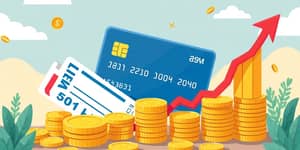
Facing student debt can feel overwhelming, but with the right knowledge and strategy, borrowers can take control of their financial futures. This guide dives deep into the current landscape and lays out clear steps to manage, repay, and potentially forgive your loans.
In 2025, total student debt exceeds $1.77 trillion in the United States, spanning both federal and private loans. More than 42.7 million Americans carry federal student loan balances, with an average federal loan debt of $38,375 per borrower.
Demographics illuminate who is most affected: 52% of borrowers are over age 35, and one in five is above 50. Black borrowers often shoulder higher balances than other groups. Students at for-profit institutions are also more likely to borrow compared to those at public or nonprofit private colleges.
Choosing the right loan type from the outset shapes your repayment journey. Federal loans offer built-in safeguards and flexible repayment options, while private loans often come with fewer relief provisions.
Selecting an effective repayment plan lays the groundwork for success. Standard, graduated, and extended plans suit borrowers with predictable or rising incomes. Income-driven repayment (IDR) plans tie monthly payments to your earnings, often making them more affordable.
IDR plans like SAVE and REPAYE offer forgiveness after 20–25 years of qualifying payments, with forgiven amounts exempt from federal taxes through at least the end of 2025.
For those dedicating their careers to public service or education, federal programs can wipe away debt after meeting criteria. Public Service Loan Forgiveness (PSLF) requires 120 qualifying payments under an IDR plan while employed full-time at a government or nonprofit organization.
Staying enrolled in an IDR plan and recertifying income annually ensures you remain on track toward forgiveness. Avoid predatory third-party companies that charge fees for services you can access through federal channels for free.
Where you live and your background influences how heavy student debt feels. States like Georgia, Maryland, Mississippi, and Virginia report some of the highest average balances. In areas with lower median incomes or higher living expenses, debt can crowd out essential needs.
Borrower characteristics also play a role. Older students may juggle family and career expenses alongside loan payments. Black and Hispanic borrowers often face higher balances and slower repayment progress, underscoring the importance of targeted resources and counseling.
Proactively planning can reduce reliance on loans and ease repayment later. Follow these actionable steps to safeguard your financial well-being:
When repayments begin, consider automatic payments to secure an interest rate reduction and avoid missed due dates. If financial hardship strikes, you might qualify for deferment, forbearance, or a reduced-payment IDR plan. Always reach out to your loan servicer early to explore options.
Staying informed and proactive is the most powerful tool borrowers have. By understanding your loan types, choosing the right repayment path, leveraging forgiveness opportunities, and managing funds wisely, you can transform student debt from a source of anxiety into a navigable milestone on your journey to financial success.
Ultimately, student loans are an investment in your future. With careful planning, attention to policy changes, and a commitment to responsible borrowing, you can emerge from school ready to pursue your passions with confidence and financial freedom.
References













